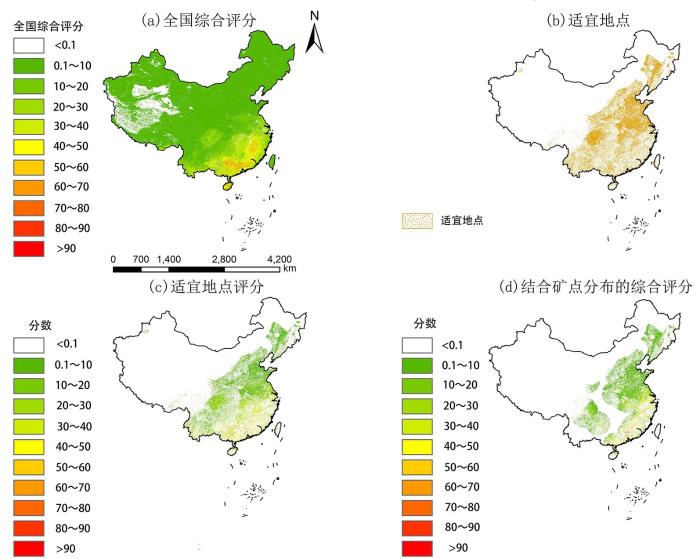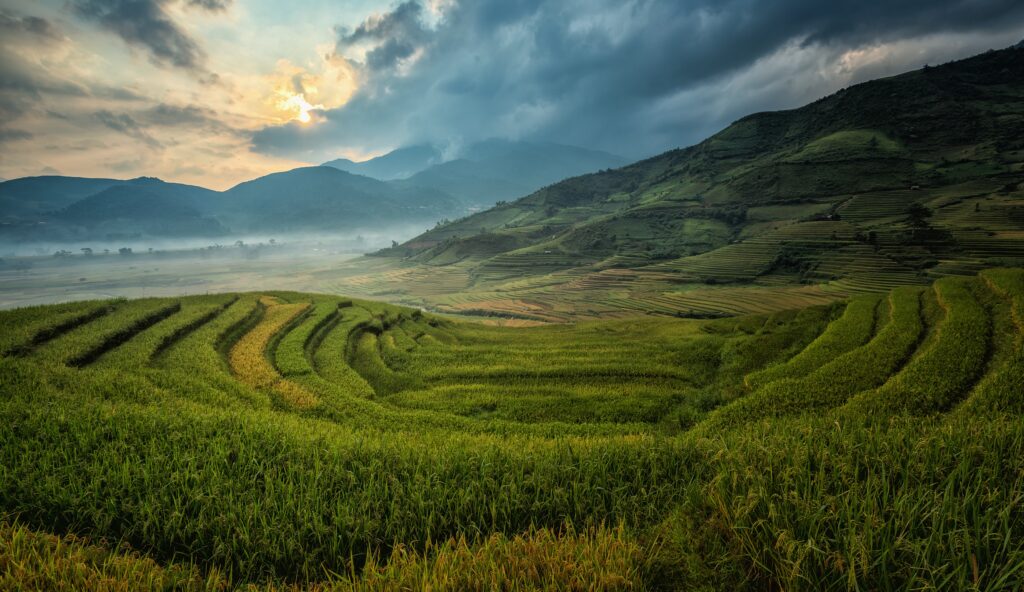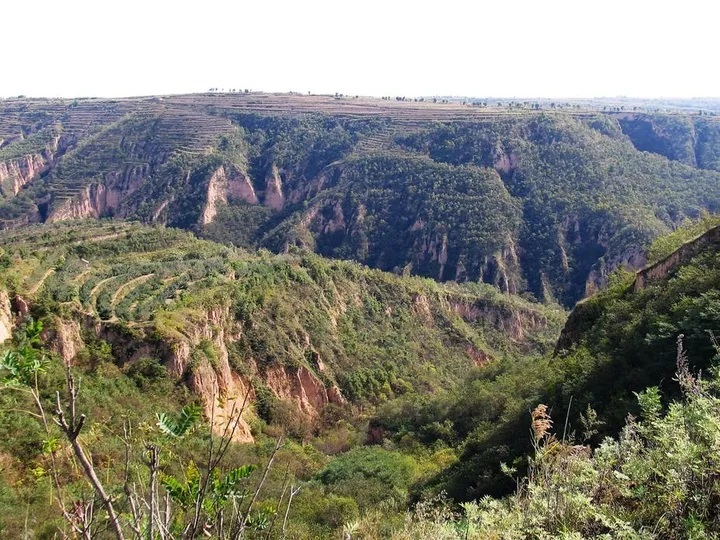Enhanced Rock Weathering and Rock Dust Application in China
Karst region in China
In recent years, enhanced rock weathering (ERW) has emerged as a promising strategy for carbon dioxide sequestration, particularly through the acceleration of mineral weathering in carbonate rocks like limestone and dolomite. China’s abundant limestone deposits and diverse climate make it an ideal candidate for exploring this approach’s potential.
A recent study analyzed data from 2000 to 2014 to assess the feasibility of ERW as a carbon dioxide capture mechanism in China. The findings identified distinct geographical patterns, with high ion activity coefficients concentrated in northern and northwestern regions, gradually decreasing towards the southeast. Carbon sink fluxes also exhibited a nuanced geographical distribution, with peak values observed in southeastern karst areas, which are characterized by eroded limestone. Over the study period, there was a slight but consistent increase in carbon sink flux, with limestone weathering contributing to an annual growth rate of approximately 0.036 tons carbon/km²/year. The total carbon sink from limestone weathering was estimated at 7.07 megatonnes carbon/year, with the Tibetan Autonomous Region hosting the largest sink, accounting for 70.01% of the total.
These findings underscore the significant potential of enhanced rock weathering as a carbon sequestration strategy in China, offering valuable insights for climate mitigation efforts.
In China’s push for carbon neutrality by 2060, using rock dust and ERW is taking on a significant role in mitigating the effects of climate change. Rocks like carbonate and silicate can absorb a lot of CO2, thanks to China’s huge land area and diverse array of rocks.
For example, around 15.2% of China’s land is covered by carbonate rocks, which can soak up tons of CO2 from the air every year. Globally, carbonate rocks absorb about 600 million tons of CO2 annually, helping to make carbon sinks. China’s enhanced rock weathering is estimated to offset about 141 million tons of CO2 every year, with both carbonate and silicate rocks playing an equal role.
Besides natural processes like ERW to reduce CO2 emissions, China is also looking into artificial methods like carbon capture and storage (CCS). But for all these methods to become successful, China needs to solve some problems and seize new opportunities. It’s important to formalize standards, cooperate with other countries, and take better care of the environment. China is already doing a lot to grow more trees, restore grasslands, and protect wetlands. These efforts go hand in hand with using rocks to soak up CO2, making China’s carbon-absorbing power stronger. For instance, in 2020, China demonstrated its commitment to climate change mitigation by planting 79 million hectares of trees. As China keeps moving toward its carbon neutrality goal, using ERW to capture carbon is seen as a big part of the plan to fight climate change and protect the Earth for future generations. With its big land area and advanced technology, China could become a world leader in carbon dioxide removal.
Enhanced rock weathering, stands out as a significant method for bolstering atmospheric CO2 consumption by accelerating the weathering of silicate rocks. Globally, this process has the potential to absorb up to 2 gigatonnes of CO2 annually. In China, regions suitable for implementing enhanced weathering are primarily concentrated in key agricultural areas such as the Northeast Plain, North China Plain, Sichuan Basin, and along the Yangtze River. Particularly favorable zones include the middle and lower reaches of the Yangtze River and the Huang-Huai-Hai Plain, covering a total area of approximately 1.199×10^7 km², with significant zones spanning about 2.9×10^6 km².
The effectiveness of enhanced weathering in these regions hinges on various factors including soil type, plant species, and mineral composition. Estimates suggest potential carbon sequestration ranging from approximately 0.17 to 2.8 Gt over a decade. Despite associated costs such as raw materials, crushing, grinding, transportation, and spreading, the expense of fixing 1 ton of CO2 is roughly 2150 CNY (about $295), making it more affordable than direct air capture and storage, but more expensive than afforestation and biochar carbon sequestration methods. Additionally, ERW offers ancillary benefits like improving soil fertility and promoting crop growth, although it may entail drawbacks such as increased water body turbidity and soil environmental changes. While there is promise for carbon sequestration in suitable regions of China, further research is necessary to assess its effectiveness, implications, and viability in light of its high cost and potential impacts.
In Chinese agriculture, there is a pressing need for sustainable farming practices and ERW has shown significant potential. By applying calcium and magnesium-rich silicate rocks to agricultural soils, ERW accelerates the natural process of CO2 sequestration, capturing CO2 and converting it into stable soil inorganic carbon (SIC). This not only helps to reduce atmospheric CO2 levels but also improves soil health by improving soil pH and providing essential mineral nutrients.
From 2019 to 2021, a series of field trials were conducted across various regions with different agricultural and climatic conditions in central China. These trials involved the application of 10 kg/m² of mixed rock powder to farmland soils. The results were highly promising: ERW significantly increased crop yield by 7% (± 4.3%) and biomass by 11% (± 4.6%). Particularly notable were the results from regions with low water balance, where ERW led to a net carbon sequestration of 4.31 ± 0.82 t-CO2/ha over three years, thereby enhancing the agricultural system’s carbon capture capacity by 1.6-2.4 times.

Further analysis highlighted the critical role of soil pH and water balance in mediating these benefits. Low soil pH environments were especially conducive to increased crop yield, with some areas seeing improvements of up to 31% (± 6.9%). Additionally, the accumulation of SIC in regions with low water balance was found to be 3.8 times greater than in regions with high water balance. The study also revealed that nitrogen fertilizer input significantly boosted SIC levels in arid regions, underscoring the importance of integrated soil and nutrient management practices.
Some studies claim that the underlying mechanisms of ERW and its impacts on crop productivity have remained somewhat unclear, necessitating more comprehensive field trials and studies. However, they underscore the substantial potential of ERW to enhance soil conditions, boost crop productivity in China, and mitigate climate change. By improving soil health and increasing carbon dioxide sequestration, ERW could play a vital role in promoting food security and addressing the challenges of climate change. Detailed field data from the studies provide valuable insights that can inform large-scale adoption of ERW in agricultural systems, offering a pathway toward more sustainable and resilient farming practices.
Author’s note: For scholarly journals focusing on enhanced rock weathering and the application of rock dust in Chinese agricultural productions, English sources are more prevalent than Chinese sources, despite the fact that they are both written by Chinese scholars. The number of journals in China focusing on ERW is slightly fewer than in other countries, such as Brazil, the United States, and the United Kingdom.
Yihong (Ethan) Xiao is a recent graduate of Boston University with a Master of Science degree in Energy and Environment and a Bachelor of Arts degree in Environmental Policy Analysis. Ethan has been a nature lover and an environmental enthusiast since childhood, and he is passionate about using his education to create greater goods in nature conservation, climate change mitigation and adaptation, invasive species removal, and environmental policy advocacy. He is excited about the opportunity to work at RTE to promote the environmental, social, and economic benefits of remineralization and enhanced rock weathering to the public. In his spare time, Ethan enjoys experiencing nature in different ways, including hiking, camping, fishing, and mountain biking, and he also loves playing soccer and collecting 80s music records.
Support us on Patreon
Thank you for joining us today! Please become a member of RTE and support us on Patreon. Unlike many larger organizations, we work with a team of determined and passionate volunteers to get our message out. We aim to continue to increase the awareness of remineralization to initiate projects across the globe that remineralize soils, grow nutrient dense food, regenerate our forests’ and stabilize the climate – with your help! If you can, please support us on a monthly basis from just $2, rest assured that you are making a big impact every single month in support of our mission. Thank you!










HERINE PAMELA AUMA
October 17, 2024 (5:32 am)
I like how you have explained it well. In our company we also do the ERW methods but majorly for African countries.
Joanna Campe
October 17, 2024 (10:19 am)
Flux is a great company! Please see our article on Flux Carbon.